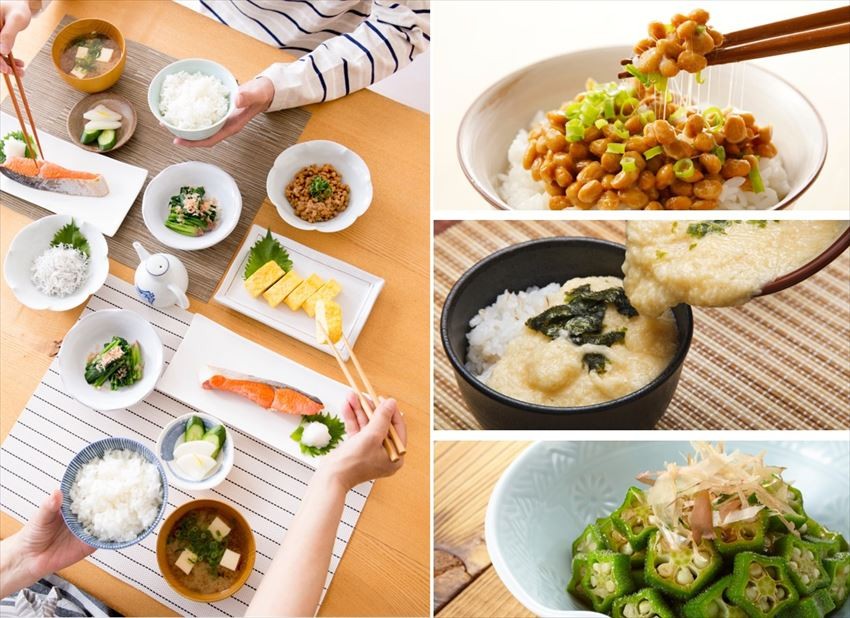
Natto is one of the popular ingredients which is often used in Japan. It is then followed by ingredients such as Tororo and Okra, and it is hard for Malaysian to imagine that food with sticky ingredients are so often served at a Japanese dining table. Such ingredients are not good in appearance and yet is hard to eat since it is so sticky, therefore may be most of you will wonder why Japanese like to eat it? Let's introduce the reasons and effects of each stick ingredient.
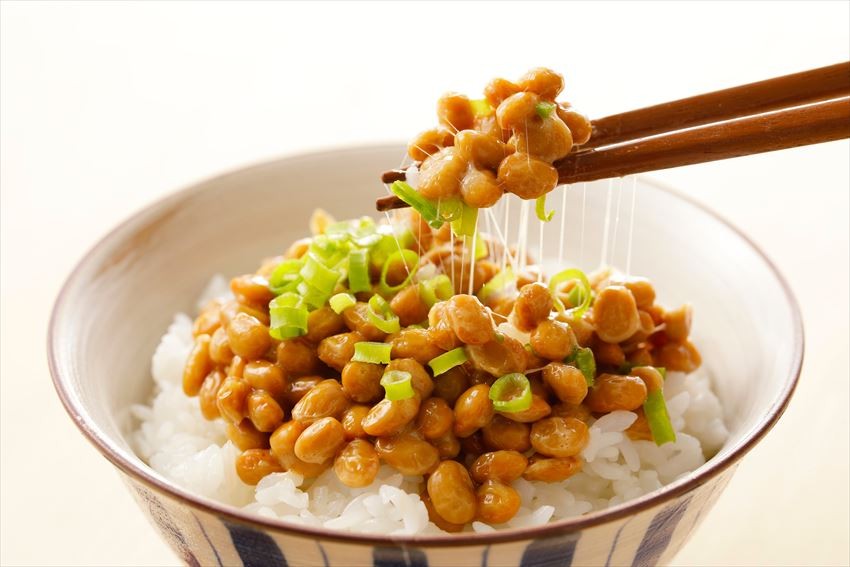
Much-maligned (by some) natto
Natto is fermented soybean which is rich in the amino acid arginine and dietary fiber that stimulates the secretion of growth hormones. It also contains vitamin E, and therefore it is said to have anti-oxidant and anti-aging effects. Besides, the isoflavones in soy beans are said to have an effect similar to that of female hormones.
Even though it's thought that, in some areas of Japan such as the Kansai region, people do not like natto, in supermarkets, the natto section is larger than you might expect. On offer are a variety of seasonings, sweet or with soy sauce, and toppings, natto with large and small soybeans, etc. Moreover, since the price of natto can be less than 100 yen for three packs, it makes a perfect side dish that can be eaten every day.
The high nutritional value and reasonable price of natto may be the reason why Japanese like to eat it so much.
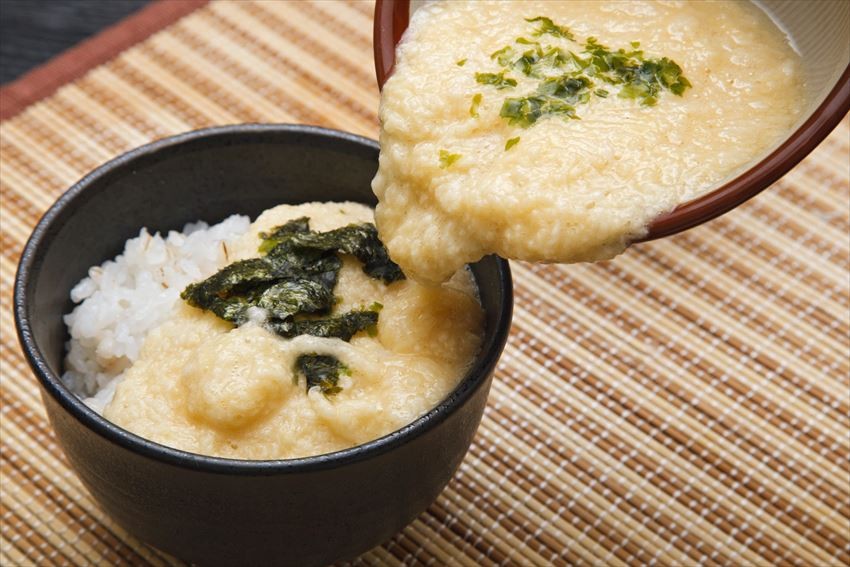
Tororo, grated nagaimo (Chinese yam)
The most valuable nutrient in nagaimo is saponin, which stimulates the immune system, promotes bone health and helps prevent cardiovascular fat deposits in blood vessels.
You can also cut it into pieces and eat it, but it is more easily digestible when grated. As shown in the picture above, the most common way to eat it is as a topping on rice. Of course there are many other Japanese dishes using tororo, such as topping it on soba noodles or eating it with tuna sashimi.
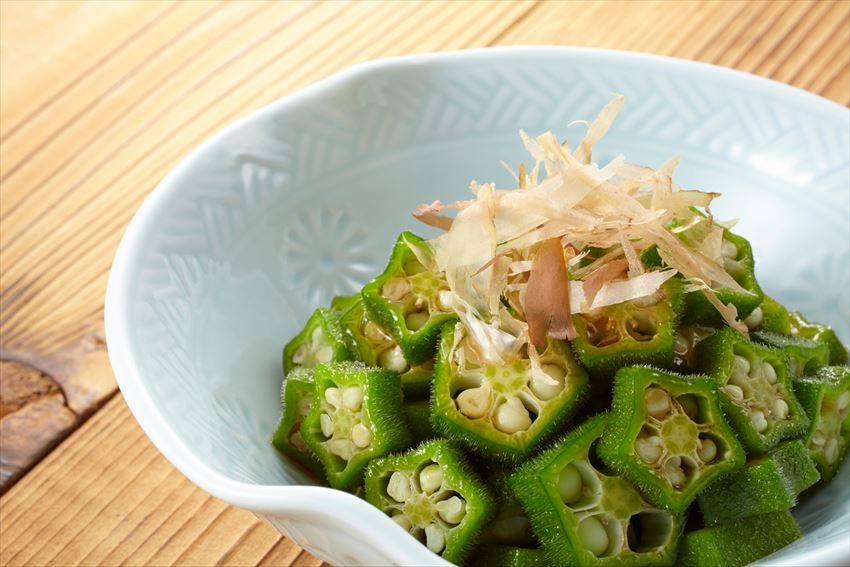
Star-shaped sticky okra
Okra is full of nutrition including dietary fiber, calcium, potassium, vitamin A, vitamin B. It also contains biotin which is said to convert the lactic acid produced in fatigue muscles into carbohydrate again. So you can expect to recover from fatigue and sore muscles by eating okra.
It is a nice and easy menu item for Japanese housewives who have to come up with a menu every day because it can be served to add color to dishes just by boiling and adding soy sauce.
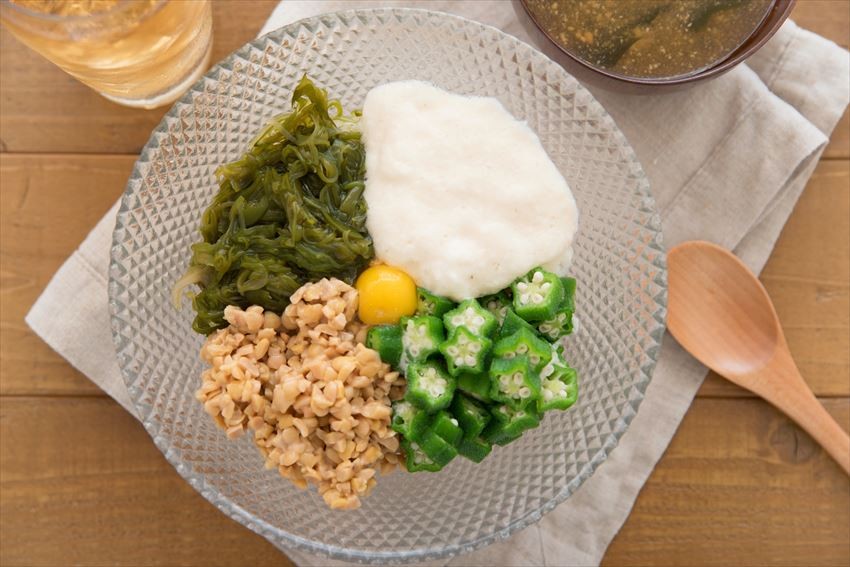
What effects do these sticky ingredients have in common?
Increased immunity
They protect the mucous membrane of the eye, improve dry eye, and protect the mucous membrane of the stomach to prevent gastritis and gastric ulcers. They also help prevent viruses from entering body, helping us avoid catching a cold.
Fatigue recovery
Since it has the effect of stimulating protein degradation and absorption, it seems that okra can be effective in helping us to use protein as an energy source.
What do you think about the foods introduced above? It seems like the secret of the good health and longevity of Japanese may really rooted in the sticky food they eat, right?
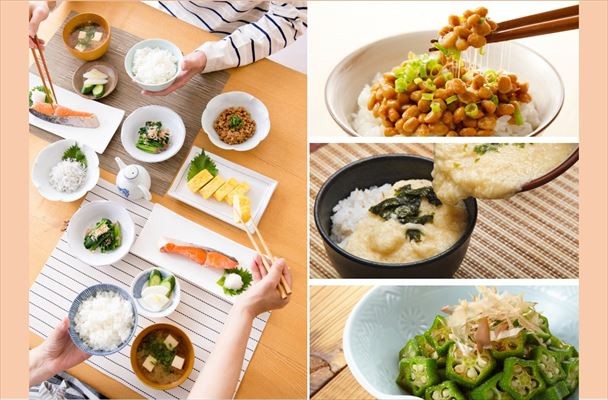
Comments